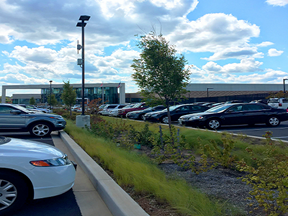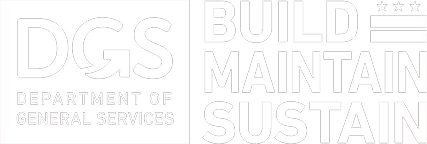

DGS prioritizes the construction and maintenance of stormwater best management practices (BMPs) in all applicable development projects. Project teams work closely with the Department of Energy and Environment’s stormwater group to limit the strain on municipal sewer systems, help recharge local aquifers, and reduce the quantity of pollutants entering the Anacostia and Potomac Rivers.
During heavy rains, stormwater runoff can overburden the sewer system and lead to raw sewage overflows to the Anacostia and Potomac Rivers. Stormwater BMPs are designed to absorb rainwater close to the source, filter it, store it, and in some cases, allow it to infiltrate into the ground. This process effectively maintains the site’s predevelopment hydrology cycle and prevents untreated runoff from entering the sewer system or nearby waterways. In doing so, BMPs support the city’s vision for restoring local ecology and managing flood risk.
Many different types of stormwater BMPs exist at District properties. Examples of BMPs at new LEED buildings include green roofs, bioretention ponds, dry wells, greywater reuse, infiltration trenches, vegetated swales, cisterns, filter strips, sand filters, and more. As of the end of Fiscal Year (FY) 2019, DGS has over 860 BMPs, covering over 3.3 million square feet, and retaining over 4 million gallons of stormwater in a 1.7” storm.
The DGS Existing Buildings and Small Projects: Sustainable Design Guide has further prescribed various strategies that DGS projects can employ to protect water as a resource and allow the District’s natural hydrological cycles to be sustained in a consistent and environmentally healthy manner.
Green Roofs
Green Roofs are a critical component of DGS efforts to lower energy consumption of buildings, reduce the urban heat island effect throughout the city, increase the retention and filtration of rainwater on District property, and restore local habitat. As of the end of Fiscal Year (FY) 2019, DGS has over 660,000 square feet of green roofs retaining nearly 500,000 gallons of stormwater in a 1.7" storm.
A green roof is a rooftop that is partially or completely covered with vegetation planted in a growing medium over a waterproofing membrane. Besides capturing rainwater and providing habitat for various species, green roofs perform an insulating function, which reduces the energy demand of buildings, greenhouse gas emissions, and the urban heat island effect.
